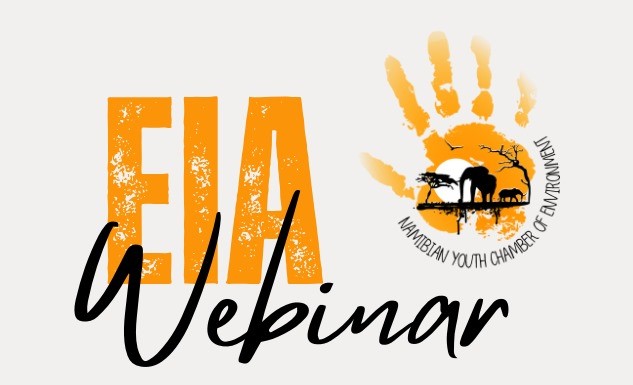Balancing development and environmental preservation is not always easy, but it is vital for a sustainable future. Environmental Impact Assessments (EIAs) play an important role in ensuring that new projects are developed responsibly, with conscious regard for their impacts on people and the environment. While EIAs are produced for most development projects in Namibia, the country has struggled to align its EIA processes with best practices.
On the 8th of November 2024, the Namibian Youth Chamber of Environment (NYCE) hosted an insightful webinar on EIAs in Namibia, providing attendees with a deeper understanding of the EIA process, the role of the Namibian EIA Tracker tool and the role of the Environmental Assessment Professionals Association of Namibian (EAPAN) in ensuring accountability. Invited experts in EIA and Geographic Information Systems (GIS), Mr John Pallet and Mr Simeon Namweya, led the discussion, offering perspectives on improving transparency and public involvement in EIAs.
EIAs in Namibia serve as an important tool to evaluate both the environmental and social implications of a proposed development project. Under the Environmental Management Act of 2007, conducting an EIA is mandatory for several types of activities, including road construction, mining, agriculture, manufacturing and tourism, among others. The EIA process is meant to ensure that these projects undergo transparent and thorough examination to minimise potential harm to communities and ecosystems. The Ministry of Environment, Forestry and Tourism’s Department of Environmental Affairs (DEA) manages and oversees the EIA processes, with the Environmental Commissioner responsible for Environmental Clearance Certificate (ECC) approvals. Information on these assessments is accessible to the public through the Environmental Information Service (EIS) website and its dedicated EIA Tracker. This transparency is essential for holding stakeholders accountable.
The EIA Tracker, Challenges and Public Participation
The EIA Tracker was introduced as a resource to enhance transparency and ease of access to EIA information for the Namibian public. Key features of the tool include an interaction map that pinpoints EIA locations across the country and a searchable database for detailed information on each EIA. During the webinar, Mr Simeon gave us a live demonstration of how the tracker works and how it can empower citizens by providing accessible and organised data on environmental assessments, which in turn supports greater public engagement. The EIA tracker can be accessed on the following link https://eia-tracker.org.na.
While this tool is doing a great job of keeping EIAs in one place, and having logged over 1,500 EIAs since May 2023, issues of EIA quality and public inclusion in the process persist. Many EIAs lack sufficient information on the potential impacts of the project or fail to engage the public adequately. Interested and Affected Parties (IAPs) may find it difficult to participate because meetings are held far from the affected area, which weakens the purpose of conducting EIAs in the first place. Cases such as Recon Africa’s oil exploration in the Kavango regions have highlighted these challenges, emphasising the need for more thorough and transparent participation practices that genuinely involve all affected stakeholders.
Becoming an EAP and the Need for a Professional Council
The webinar also explored ways in which interested individuals can become Environmental Assessment Practitioners (EAPs). Key qualifications include a solid background in biodiversity and environmental studies, but practical experience and mentorship are also crucial for developing the necessary skills. Additionally, Mr Pallet stressed the importance of targeted trainings to ensure that EAPs produce high quality EIAs, meeting both legal and ethical standards.
Mr Pallet emphasised the need for a professional council dedicated to EAPs, which already exists in the form of EAPAN, but it currently lacks government backing. If government were to institute a policy that all EAPs must be a member of EAPAN, this body could maintain standards, enforce accountability and provide practitioners with guidance and resources, because unlike doctors, engineers or surveyors, EIA practitioners lack regulation. He further voiced frustration at the government’s slow response to establishing this council, viewing it as a significant barrier to progress in the field. With a regulatory council, the quality and consistency of EIAs would be improved, with benefits for all Namibians and their environment.
Conclusion
Properly conducted Environmental Impact Assessments (EIAs) result in increased public participation and more sustainable development practices. The session concluded with a Q&A segment where issues around public participation and IAP engagement were addressed in-depth. Clarification was made regarding the role of the DEA in verifying EIA information, because while the EIA Tracker enhances access to information, it does not verify the data itself, highlighting the need for a strong public oversight mechanism.
Click here to download the PowerPoint Presentation (pptx, 15 mb)

